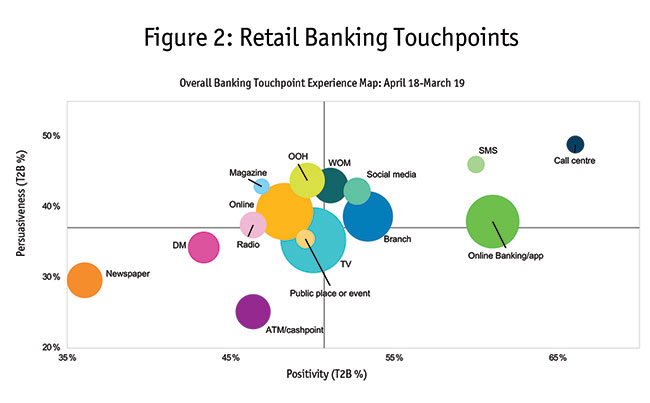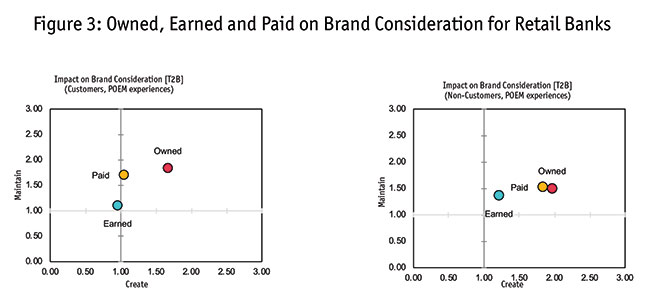All things considered
Editor's note: Based in New York, Fiona Blades is president and chief experience officer at MESH Experience, a London research firm.
 Everyone is talking about customer experience. But what do we mean by this? I expect it means different things to different people.
Everyone is talking about customer experience. But what do we mean by this? I expect it means different things to different people.
For many it is the experience people have with the brand’s core product – driving the Mercedes-Benz, flying Delta, drinking a Pepsi, using an LG laundry machine. For others it is a direct interaction with the company – going into a bank’s branch, using the mobile app, calling the call center or exploring the brand’s website. At our firm, we believe the customer experience encompasses every single brand interaction, whether this is seeing a neighbor’s Mercedes-Benz or noticing a poster featuring the latest model.
Mark Pritchard at Proctor and Gamble recently described customer experience in this way: “What we think about is every aspect of the consumer experience and trying to make it better – the product, the package, the communication, the in-store, the online, the in-use, the after-use and how it all comes together.”
And five years ago in an article in Harvard Business Review Keith Weed said: “Companies are increasingly enhancing the value of their products by creating customer experiences. Some deepen the customer relationship by leveraging what they know about a given customer to personalize offerings. Others focus on the breadth of the relationship by adding touchpoints. Our research shows that high-performing brands do both, providing what we call ‘total experience.’”
In fact, we believe that the most important marketing metric will soon change from “share of wallet” or “share of voice” to “share of experience.”
One of the quotes that inspired my perspective comes from advertising industry veteran Jeremy Bullmore: “People build brands like birds build nests, from scraps and straws they chance upon.” Whether it is seeing the TV ad or reading a social post about a brand, each interaction builds the perception of the brand in someone’s mind and each is part of that customer’s experience.
Why is it important to take a broader definition of customer experience?
Firstly, it is true that the core product experience is the most important and it is right for companies to focus on this, whether it is sitting on a stylish Made.com sofa or receiving a convenient Amazon delivery. In capturing every brand interaction in real-time, we invariably find that “Me Using/Drinking/Eating” is the most engaging experience and normally the one which makes people more likely to choose this brand in the future.
 We have seen some exceptions. In Latin America, we saw that the emerging middle classes found the purchase experience for beverages even more engaging and persuasive than the consumption experience. It was more exciting to go shopping in new retail outlets and choose brands which had been inaccessible previously than enjoying the drink at home.
We have seen some exceptions. In Latin America, we saw that the emerging middle classes found the purchase experience for beverages even more engaging and persuasive than the consumption experience. It was more exciting to go shopping in new retail outlets and choose brands which had been inaccessible previously than enjoying the drink at home.
So it is right that companies focus on all the aspects of the usage experience – the taste of the chocolate, the serve of the drink, the comfort of the airline seats and the quality of food offered on the plane – because these are at the heart of the customer experience and can make or break the brand.
Creating positive associations
Over the last few years, as marketers, we have become much more adept at curating these experiences. We understand that we need to be creating positive associations around the usage experience, such as linking chocolate to Halloween treats and pairing alcoholic beverages with food on a menu. We know that an Uber experience at the end of an evening meeting friends is different from one picking up from an airport. Considering usage by occasion is vitally important. For LATAM Airlines we saw that, while it was normally the most preferred brand overall, there were certain occasions where competitors were being chosen instead. So even though, intuitively, brands understand the importance of occasions, brand trackers rarely dig down to this important level to diagnose where brands need to take action.
Most of us would define the customer experience as including those brand interactions where we come in touch with the company, speaking to the call center, using an app or going onto the website. These are normally the type of interactions where we get asked to report back on our experience. How likely would we be to recommend this to a friend (NPS) or how satisfied were we?

Again, at our firm, we find that these owned touchpoints are extremely important. After the actual usage experience, they are often the most powerful. In Figure 2 we can see the importance of online/banking apps, branches and call centers. A bank’s website is also a powerful touchpoint.
Normally these are proactively sought-out experiences, rather than passively-seen ads, so it should not be surprising that people feel strongly about these type of experiences – either positively or negatively. An emotional reaction to a brand experience is important to its impact. We have found that a positive experience usually has about three times the impact of a neutral one on brand consideration. And in some instances, a neutral experience erodes brand consideration. In Figure 3, for example, when we look at the impact of owned media for banking on brand consideration, we can see how important this is.

But why stop at owned-media experiences in defining the customer experience? It’s just as important to consider how earned media fits into the picture. To measure the customer experience we often ask a question like “How likely would you be to recommend this to a friend?” but shouldn’t you also look at whether people are talking about your brand?
Conversations tend to be polarizing. If a person initiates the conversation, they are likely to feel very positively or negatively about it. Whereas if someone else initiates the conversation, the response might be neutral. Conversations are more likely to be about the product experience than advertising but when advertising stimulates conversation it amplifies the campaign.
Social media is, of course, becoming increasingly important. But we spotted this trend back in 2007, when someone changed their Facebook status to “feeling very Bom Chicka Wah Wah!” after seeing the Lynx/Axe Bom Chicka Wah Wah campaign. We were evaluating the spread of word of mouth and it was four weeks after the start of the campaign that we saw the height of conversations. People were using the catchphrase, dancing in front of posters waiting for the school bus and annoying their dad with it when the TV ad came on.
But advertising has to be particularly distinctive (or disruptive) to be discussed in social media and the majority of campaigns we see attract relatively little buzz in spite of this being a brand objective.
However, beyond face-to-face conversations and social media chat, there is another very important “earned” experience: peer observation. We have noticed that seeing someone else using/eating/drinking the brand can make a significant difference to brand perception. This has been verified in the Journal of Retailing by Shane Baxendale.
Seeing a car on the road and seeing your neighbor’s car are two of the most prevalent car brand experiences. Seeing a laundry machine in someone else’s house is a very important touchpoint early in the purchase journey. When we evaluated the relaunch of Gatorade, repositioning from sports drink to sports nutrition, we saw the importance of experiential touchpoints like gyms, fitness centers and parks. One of the target audiences was particularly influenced by seeing others in the gym using the product.
We would urge marketers not simply to ask an NPS question but to measure who is recommending your brand, who is talking about your brand in what context and also how many people are being reached by others using your brand.
Vital driver
If we omit to see advertising as part of the customer experience, we miss the big picture! Paid media is a vital driver to owned media and is particularly important to attract new customers (see Figure 3).
It can help to shape the way your brand should be used/consumed. Think of the ways that Hellmann’s mayonnaise advertised new ways to use the brand. A series of sponsorship activities we evaluated for Cobra beer with Channel 4 helped people think beyond curry and Cobra.
But don’t limit your thinking to your own marketing budget. We have found that retailer advertising can have an enormous impact on brands. LG Electronics understands that in some instances, retailer ads can be more engaging and persuasive than its own manufacturer ads. Understanding this complete picture can change investment decisions. When Pepsi asked our firm to see which touchpoints made people feel closer to the brand, we discovered that there were two: bars/restaurants/pubs and TV. However, Pepsi was not being advertised on TV; it was the KFC ad with Pepsi on the end shot that people were picking up. This was hardwiring Pepsi into an occasion! How many marketers are measuring the impact of retail ads featuring their brands? They don’t even appear in a typical share-of-voice metric yet these experiences are profoundly impacting on your brand.
Structure around the customer
Finally, we would urge marketers to look through the customer’s eyes. Many clients complain about silos and departments that are not connected. It is important to change this and structure around the customer. A good way to start is to understand the world from your customer’s perspective. The way customers are coming into contact with your brand might surprise you. Most marketers can draw a pie chart of where they are spending their budget. But can you draw a pie chart of where people are experiencing your brand? Is seeing others using it 2% or 20% of experiences? Are these positive or negative experiences? Nowadays it is perfectly possible to answer these questions and to truly understand your customers’ experience and it is imperative to do so.
